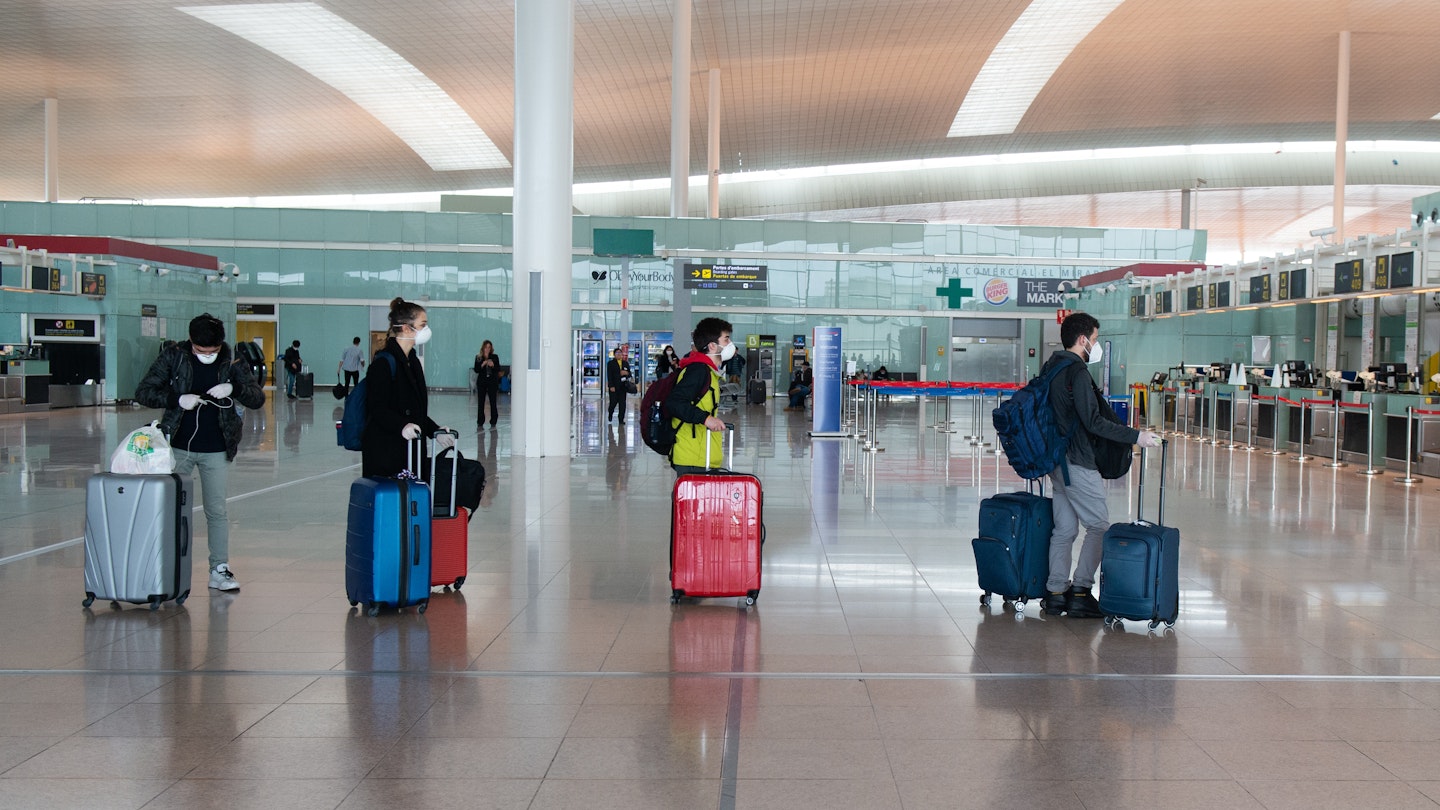Four-hour waits to board flights? That’s what reports in the UK media are suggesting once aviation restarts after countries start to lift their COVID-19 lockdowns. Is it likely? Aviation journalist John Walton applies his expertise — and a hard dose of logic — to the idea.
Four hours? To board a plane? The suggestion is all over the media, and seems to stem from this single article in the UK’s The Times apparently based on the suggestions of one individual interviewed. Let’s be clear: you are unlikely to have to wait four hours just to board a plane on a regular basis. Yes, boarding may take longer, and yes, you may be asked to arrive at the airport earlier. However, four hours just for boarding? It’s really unlikely.
It might take a little longer than usual because airlines are trying to board planes from the rear first — and of course, there’s the spacing out of passengers that will be necessary at every point at which you would normally be queueing or interacting with an airline staffer, airport worker, immigration officer, coffee vendor, or anyone else.
What we may end up seeing is an increase in the recommended time that passengers arrive at the airport, which is at present usually three hours before their flight’s departure for international flights and two for domestic or internal flights.
Some of that requirement might stem from what we’re already seeing, where some airports are putting pre-flight rapid testing for COVID-19 into effect. These results can be back in as little as ten minutes, so truly the wait for the results isn’t the blocker here. Rather, it’s more likely to be the wait to get the test itself rather than the wait to get your results, especially when that means that queues need to maintain two metres of distance between passengers (or perhaps family groups) where before it might have felt like two inches.
You may also have your temperature checked, although the effectiveness of thermal imaging and indeed the extent to which anyone who has COVID-19 will automatically have a fever aren’t entirely certain at the moment.
How Boarding Will Change
That said, the way we board aircraft is already changing, primarily to account for physical distancing requirements and for airline staff to ensure that everybody has had a chance to properly don the right personal protective equipment.
An increasing number of airlines are either requiring or recommending that passengers wear masks — not necessarily the disposable surgical-style given the supply shortage of PPE in medical settings, but perhaps a homemade mask or other face covering. Most are offering masks to passengers who might not have their own, so it may take some time to distribute them. However, it would seem possible to do that during the wait at the gate.
Some airlines have revamped how they board in order to avoid passengers walking past others, with the rear of the aircraft being boarded first and then passengers getting on from back to front. Consequently, the fewer people you come into contact with, the lower the risk of anyone who happens to be an asymptomatic carrier of the SARS-CoV-2 coronavirus that causes COVID-19 unknowingly passing the virus on to you.

While COVID-19 is still a threat, though, expect the back-to-front boarding procedure to spread across airlines — unless, of course, we learn new information about the virus that means this isn’t effective.
Why All This Might Be More Time Consuming
Back-to-front boarding shouldn’t, all other things being equal, be necessarily longer than any other way to board a plane, and may indeed be theoretically faster. However, all other things aren’t equal: beyond passenger spacing and the need to check or hand out masks, passengers are likely to be picking their way gingerly along the aisle in order to avoid touching any surfaces.
There are other reasons why the whole experience might take more time. Some airlines are increasing the frequency of their aircraft disinfection, fogging the cabin in between flights and deep-cleaning areas like lavatories, galley kitchens, and entryways. That adds time; consequently, it’s likely that the plane sits without passengers for a little longer while cleaning teams do their vital work.
Customs and border officials will likely need passengers to remove their masks, at least temporarily, to verify their identity. Kiosks, which have replaced traditional desks in a lot of airports, may be tricky. As many folks using face recognition to unlock their phone these days will have realized, this technology turns out to not be ideal if you’re wearing a mask. Airports may need to be reconfigured on a temporary — or not so temporary — basis to allow for these new ways of working.
Even more than ever, we’ll all need to make sure we pack a few vital things in our hand luggage: patience, tolerance, kindness — and lots of hand sanitizer.




